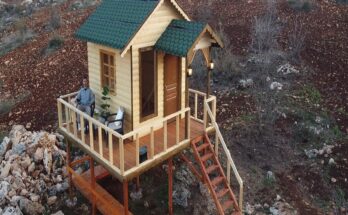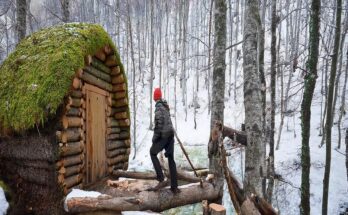Spending ten days alone in the wilderness is no small feat—it’s a test of grit, ingenuity, and resolve. Last fall, I decided to take on the challenge: survive ten days in the woods with nothing but a knife, a flint, and my wits. The first and most critical task? Building a shelter from scratch. Here’s how I turned a patch of forest into a temporary home and made it through the solitude.
I chose a dense woodland near a small creek, knowing water would be my lifeline. Day one was all about scouting. I found a spot between two sturdy trees, slightly elevated to avoid flooding, with a natural windbreak from a thicket of shrubs. The goal was simple: create a shelter that’d keep me dry, warm, and safe from the elements. With no tarp or tent, I had to rely entirely on what the forest offered.
The shelter’s design was a lean-to—quick to build and efficient. I started by lashing a long, fallen branch between the two trees with strips of bark I peeled from a dead birch. This formed the ridgepole. Next, I gathered armfuls of straight branches and leaned them against the pole at an angle, creating a sloped roof. The steeper the pitch, the better it’d shed rain, I figured. I wove smaller sticks through the frame to add stability, my hands raw by the end of it.
Insulation was the next hurdle. The woods were carpeted with dry leaves, so I piled them thickly over the roof, layering until it looked like a giant bird’s nest. I packed more leaves and moss into the gaps, sealing out drafts. For the floor, I dug a shallow depression and lined it with pine needles—nature’s mattress. It wasn’t luxurious, but it kept the cold ground at bay.
Fire was non-negotiable. Near the shelter’s open side, I built a small fire pit with rocks I hauled from the creek. Using my flint, I sparked a flame from dry twigs and nursed it into a steady blaze. That first night, the warmth was a lifeline—the temperature dipped below freezing, and the fire’s glow was my only company.
The days blurred together. I reinforced the shelter as flaws revealed themselves: a leaky roof after a drizzle, a collapsing wall from a gusty night. I added more leaves, braced the frame with heavier logs, and learned to adapt. Food was scarce—mostly berries and a few snares that caught nothing—but the shelter held strong. Rain tested it on day six, and though dampness crept in, I stayed mostly dry.
By day ten, I was exhausted but triumphant. The shelter wasn’t pretty—crooked, patched, and rough—but it had kept me alive. The solitude was brutal, the silence deafening at times, yet building that refuge gave me purpose. I emerged from the woods leaner, scruffier, and prouder than I’d ever been. Surviving ten days alone taught me one thing: with determination and a few good sticks, you can carve out a home anywhere.



